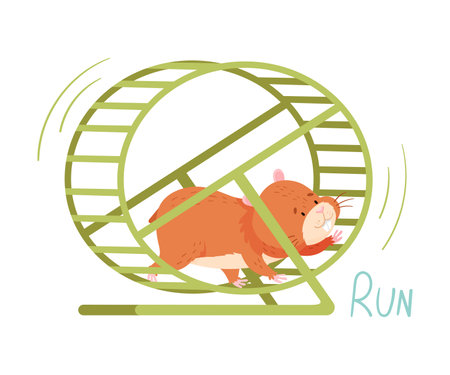1. Understanding Canine Obesity
Obesity in dogs is a growing concern for pet owners, as excess weight can lead to various health issues and reduce a dogs quality of life. Just like in humans, obesity occurs when a dog consumes more calories than they burn, leading to fat accumulation. Understanding the causes and risks associated with obesity can help you take proactive steps in managing your dogs weight.
Causes of Obesity in Dogs
Several factors contribute to canine obesity, including diet, lifestyle, and medical conditions. Below are some common causes:
| Cause | Description |
|---|---|
| Overfeeding | Feeding too much food or too many treats can lead to excessive calorie intake. |
| Lack of Exercise | A sedentary lifestyle means fewer calories burned, leading to weight gain. |
| Poor Diet | Feeding low-quality food with excessive fillers and fats can contribute to weight issues. |
| Aging | Older dogs tend to have slower metabolisms, making weight gain more likely. |
| Certain Medical Conditions | Hypothyroidism and other medical issues can cause weight gain despite proper diet and exercise. |
Health Risks Associated with Obesity
An overweight dog is at risk for several serious health conditions that can shorten their lifespan and decrease their overall well-being. Some of the most common health risks include:
- Diabetes: Excess weight increases the likelihood of insulin resistance, leading to diabetes.
- Joint Problems & Arthritis: Extra weight puts stress on joints, increasing the risk of arthritis and mobility issues.
- Heart Disease: Obese dogs are more prone to high blood pressure and heart-related conditions.
- Respiratory Issues: Excess fat around the chest area can make breathing difficult, especially in brachycephalic (short-nosed) breeds.
- Liver Disease: Fat buildup in the liver can lead to hepatic lipidosis, affecting liver function.
The Importance of Maintaining a Healthy Weight
A healthy weight helps ensure your dog stays active, comfortable, and free from preventable health problems. By understanding what leads to obesity and its associated risks, you can take steps toward providing a balanced diet and appropriate exercise routine for your pet.
2. Choosing the Right Diet
Feeding your dog the right diet is crucial in managing their weight and preventing obesity. A well-balanced diet should provide all the essential nutrients while maintaining a healthy caloric intake. Lets explore what makes a great diet for your furry friend.
High-Quality Ingredients Matter
The quality of ingredients in your dog’s food plays a significant role in their overall health. Look for whole, natural ingredients without unnecessary fillers or artificial additives. Here’s a quick comparison of good vs. poor-quality ingredients:
| High-Quality Ingredients | Poor-Quality Ingredients |
|---|---|
| Real meat (chicken, beef, fish) | Meat by-products |
| Whole grains (brown rice, oatmeal) | Corn, wheat, soy fillers |
| Fresh vegetables and fruits | Artificial colors and preservatives |
| Healthy fats (fish oil, flaxseed) | Unspecified animal fat |
Portion Control is Key
Even if you feed your dog high-quality food, overfeeding can still lead to weight gain. Portion control ensures that your dog receives the right amount of calories based on their size, breed, and activity level.
How to Determine the Right Portion Size
- Check the Feeding Guidelines: Most commercial dog foods provide a recommended daily amount based on weight.
- Consider Activity Level: Active dogs may need more calories, while less active dogs require fewer.
- Measure Your Dog’s Food: Use a measuring cup to ensure consistency in portion sizes.
- Avoid Free-Feeding: Scheduled meals help prevent overeating and keep track of intake.
Selecting the Best Food for Your Dogs Needs
No single diet fits all dogs—factors like age, breed, health conditions, and lifestyle should guide your choice. Here are some common dietary needs and suitable food types:
| Dog Type | Recommended Diet |
|---|---|
| Puppies | High-protein food with DHA for brain development |
| Seniors | Lower-calorie food with joint-supporting nutrients like glucosamine |
| Active Breeds | High-protein, high-fat diets for sustained energy |
| Overweight Dogs | Low-calorie, high-fiber diets to promote weight loss |
| Sensitive Stomach Dogs | Limited ingredient diets with easily digestible proteins like lamb or turkey |
Avoiding Common Diet Mistakes
- Treat Overload: Treats should only make up about 10% of your dog’s daily calorie intake.
- Ignoring Food Labels: Always check ingredient lists and avoid harmful additives.
- Sudden Diet Changes: Gradually transition between foods to prevent digestive upset.
Selecting the right diet for your dog is one of the most effective ways to prevent obesity and keep them healthy. By focusing on quality ingredients, proper portion control, and tailored nutrition, you can ensure that your furry friend stays in great shape for years to come.

3. The Role of Exercise in Weight Management
Keeping your dog at a healthy weight isnt just about diet—exercise plays a crucial role too. Regular physical activity helps burn calories, build muscle, and keep your pup mentally stimulated. A well-balanced routine ensures your dog stays fit and happy.
Benefits of Regular Exercise
Consistent exercise offers numerous advantages for your dogs health and well-being:
- Weight Control: Helps prevent obesity by burning excess calories.
- Joint Health: Keeps joints flexible and reduces the risk of arthritis.
- Mental Stimulation: Prevents boredom and destructive behaviors.
- Improved Mood: Reduces anxiety and promotes better behavior.
Choosing the Right Exercise Routine
The best type of exercise depends on your dogs breed, age, and energy level. Here’s a general guide to help you determine what works best:
| Dog Type | Recommended Activities | Duration/Frequency |
|---|---|---|
| Puppies | Short walks, playtime, basic training exercises | 5-10 minutes per session, multiple times daily |
| Adult Active Breeds | Running, hiking, fetch, agility training | 30-60 minutes daily |
| Seniors or Low-Energy Dogs | Gentle walks, swimming, light indoor activities | 15-30 minutes daily, as tolerated |
Ways to Keep Your Dog Active
If youre looking for fun ways to encourage movement, try these ideas:
- Puzzle Toys: Stimulate their mind while keeping them engaged.
- Tug-of-War: A great indoor workout for strength and bonding.
- Scent Games: Hide treats around the house to encourage sniffing and searching.
- Doga (Dog Yoga): Gentle stretching exercises that promote flexibility.
- Diverse Walking Routes: Change up walking paths to keep things interesting.
A Balanced Approach to Fitness
Avoid over-exercising, especially with puppies or senior dogs. Start slow and gradually increase intensity based on their comfort level. Always provide fresh water and monitor for signs of exhaustion like excessive panting or reluctance to move.
A well-planned combination of diet and exercise is key to maintaining your dogs ideal weight. By ensuring they stay active in ways they enjoy, youll help them lead a longer, healthier life!
4. Recognizing and Adjusting to Weight Changes
Keeping an eye on your dog’s weight is essential for maintaining their overall health. Weight changes can happen gradually, making them easy to overlook. By regularly monitoring your dogs body condition and adjusting their diet and activity levels as needed, you can help prevent obesity or unhealthy weight loss.
Signs of Weight Gain or Loss
Dogs may gain or lose weight for various reasons, including changes in diet, activity level, age, or underlying health issues. Here are some common signs to watch for:
| Signs of Weight Gain | Signs of Weight Loss |
|---|---|
| Ribs and waistline are difficult to feel | Ribs and spine become more prominent |
| Lack of energy or reluctance to exercise | Reduced muscle mass and weakness |
| Panting more than usual after minimal activity | Lack of appetite or eating less than usual |
| Trouble jumping onto furniture or climbing stairs | Dull coat and potential hair loss |
| Bigger belly or sagging skin around the abdomen | Lethargy and decreased interest in activities |
How to Adjust Your Dog’s Diet and Activity Levels
If Your Dog Is Gaining Weight:
- Measure food portions: Ensure youre feeding the correct amount based on your dogs size, breed, and activity level.
- Avoid excessive treats: Treats should make up no more than 10% of daily calories.
- Add more exercise: Increase daily walks or introduce playtime activities like fetch or agility exercises.
- Select a lower-calorie food: Consider switching to a weight management formula recommended by your vet.
- Create a feeding schedule: Stick to regular meal times instead of free-feeding throughout the day.
If Your Dog Is Losing Weight:
- Add nutrient-dense food: Increase high-quality protein sources to support muscle maintenance.
- Energize with healthy fats: Include healthy fats like fish oil to promote weight gain if needed.
- Slightly increase portion sizes: Gradually adjust meal portions under veterinary guidance.
- Create a comfortable eating environment: Ensure your dog feels safe while eating to encourage a better appetite.
- Consult your vet: Unexplained weight loss could indicate an underlying health issue requiring medical attention.
The Importance of Regular Checkups
A routine checkup with your veterinarian can help detect early signs of weight-related health issues. Your vet can assess body condition, recommend dietary adjustments, and rule out any underlying medical concerns. Aim for regular weigh-ins at home or during vet visits to ensure your dog stays within a healthy range.
The Role of Consistency in Weight Management
Your dog’s diet and exercise routine should be consistent. Sudden changes can lead to digestive issues or difficulty maintaining a stable weight. Track their progress by keeping notes on their meals, treats, and activity levels. Small adjustments over time will lead to lasting results in managing their weight effectively.
5. Healthy Treats and Feeding Habits
Providing treats is a great way to reward your dog, but its important to do so in a way that supports their overall health. Overfeeding treats or giving unhealthy options can contribute to weight gain and obesity. Learn how to incorporate treats responsibly, avoid overfeeding, and establish a feeding routine that helps maintain a healthy weight.
Choosing Healthy Treats
Not all dog treats are created equal. Some are packed with unnecessary calories, artificial additives, and unhealthy ingredients. When selecting treats, look for natural options with limited ingredients. Here are some healthy treat choices:
| Treat Type | Benefits |
|---|---|
| Carrot sticks | Low in calories, good for dental health |
| Apple slices (without seeds) | Rich in fiber and vitamins |
| Blueberries | Packed with antioxidants |
| Lean cooked chicken | A great source of protein |
| Commercial low-calorie dog treats | Designed specifically for weight management |
Avoiding Overfeeding
Treats should only make up a small portion of your dog’s daily caloric intake. A good rule of thumb is that treats should not exceed 10% of their total daily calories. If you give your dog treats frequently, adjust their meal portions accordingly to prevent overfeeding.
Portion Control Tips:
- Break larger treats into smaller pieces to make them last longer.
- Avoid feeding table scraps, as many human foods are high in fat and calories.
- If you use treats for training, choose low-calorie options to avoid excessive calorie intake.
- Mental stimulation activities like puzzle feeders can be used instead of high-calorie rewards.
Establishing a Consistent Feeding Routine
A structured feeding schedule plays an essential role in weight management. Free-feeding (leaving food out all day) can lead to overeating and unwanted weight gain. Instead, stick to a set schedule that ensures controlled portions.
Tried-and-True Feeding Guidelines:
- Feed at the same times every day: This helps regulate metabolism and digestion.
- Avoid late-night meals: Feeding too close to bedtime may lead to unused energy being stored as fat.
- No free-feeding: Measure out meals instead of leaving food available all the time.
- Monitor your dog’s body condition: Adjust portions based on activity levels and weight changes.
Treats and feeding habits play a crucial role in maintaining your dogs healthy weight. By choosing nutritious snacks, controlling portions, and sticking to a regular feeding schedule, you can help keep your furry friend fit and happy!


